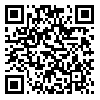BibTeX | RIS | EndNote | Medlars | ProCite | Reference Manager | RefWorks
Send citation to:
URL: http://mjiri.iums.ac.ir/article-1-3152-en.html
Background: Personal Information Management (PIM) refers to the tools and activities to save and retrieve personal information for future uses. This study examined the PIM activities of faculty members of Iran University of Medical Sciences (IUMS) regarding their preferred PIM tools and four aspects of acquiring, organizing, storing and retrieving personal information.
Methods : The qualitative design was based on phenomenology approach and we carried out 37 interviews with clinical and basic sciences faculty members of IUMS in 2014. The participants were selected using a random sampling method. All interviews were recorded by a digital voice recorder, and then transcribed, codified and finally analyzed using NVivo 8 software.
Results : The use of PIM electronic tools (e-tools) was below expectation among the studied sample and just 37% had reasonable knowledge of PIM e-tools such as, external hard drivers, flash memories etc. However, all participants used both paper and electronic devices to store and access information. Internal mass memories (in Laptops) and flash memories were the most used e-tools to save information. Most participants used “subject” (41.00%) and “file name” (33.7 %) to save, organize and retrieve their stored information. Most users preferred paper-based rather than electronic tools to keep their personal information.
Conclusion : Faculty members had little knowledge about PIM techniques and tools. Those who organized personal information could easier retrieve the stored information for future uses. Enhancing familiarity with PIM tools and training courses of PIM tools and techniques are suggested.
| Rights and permissions | |
 |
This work is licensed under a Creative Commons Attribution-NonCommercial 4.0 International License. |





